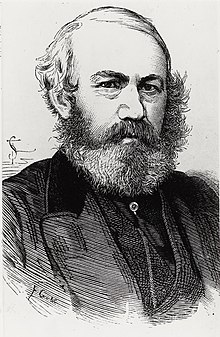Thomas Bouch
| Sir Thomas Bouch | |
|---|---|
 |
|
| Born |
25 February 1822 Thursby, Cumbria, England |
| Died | 30 October 1880 (aged 58) Moffat, Scotland |
| Nationality | British |
| Engineering career | |
| Discipline | Civil engineer Structural engineer |
| Institutions | Institution of Civil Engineers (Associate 1850, Member 1858) |
| Projects | Waverley Station, Tay Rail Bridge |
Sir Thomas Bouch (/ˈbaʊtʃ/; 25 February 1822 – 30 October 1880) was a British railway engineer in Victorian Britain.
He was born in Thursby, near Carlisle, Cumberland, England and lived in Edinburgh. As manager of the Edinburgh and Northern Railway he introduced the first roll-on/roll-off train ferry service in the world. Subsequently as a consulting engineer, he helped develop the caisson and popularised the use of lattice girders in railway bridges. He was knighted after the successful completion of the first Tay Railway Bridge, but his name is chiefly remembered for the subsequent Tay Bridge Disaster, in which 75 people are believed to have died as a result of defects in design, construction and maintenance, for all of which Bouch was held responsible. He died within 18 months of being knighted, with his reputation destroyed.
Bouch's father (a retired sea-captain) kept the Ship Inn at Thursby and Thomas was educated locally (Thursby and then Carlisle) before at the age of 17 beginning his civil engineering career as assistant to one of the engineers constructing the Lancaster and Carlisle Railway. After a short spell working in Leeds (1844–45) he was for four years one of the Resident Engineers on the , leaving in 1849 to become manager and engineer of the Edinburgh and Northern Railway, one of the precursors of the North British Railway. He introduced the first roll-on roll-off train ferries in the world, across the Firth of Forth from Granton to Burntisland in Fife (3 February 1850.). Others had had similar ideas, but Bouch put them into effect, and did so with an attention to detail (such as design of the ferry slip) which led a subsequent President of the Institution of Civil Engineers to settle any dispute over priority of invention with the observation that "there was little merit in a simple conception of this kind, compared with a work practically carried out in all its details, and brought to perfection."
...
Wikipedia
